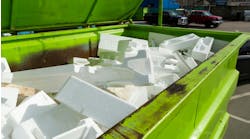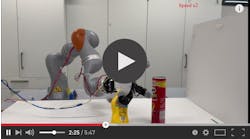Sticky Innovation: New Adhesive Technologies Power the Auto Industry
Nov. 19, 2015
Advances in adhesive chemistry are enabling smaller, stronger, and lighter-weight assemblies for the automotive industry.
Customized chemistry is quickly expanding throughout the adhesives industry, and making an impact on automotive and medical applications. Many adhesive companies are using these breakthroughs to make assemblies less complex, thus saving time and money, while also reducing the number of manufacturing processes involved.
Some manufacturing companies have begun teaming up with adhesive firms to produce precut liners that address vibration and noise concerns.
A recent trend is to have pre-impregnated adhesive in a matrix or thin films backing precut shapes.
Pre-cut layered adhesive films can save time in assembly. “A vehicle can use thin laminated adhesives that are cut to size, which can free a designer to create a custom part that reduces weight, gives aesthetically pleasing results, and lets devices be thinner,” says Joe, senior account representative at 3M. “The industry trend across most markets is to go thin and lightweight; laminated adhesives accommodate for that challenge.”
There is also a big movement in the industry toward using reclaimed waste materials. In addition, composites and new polymers are being altered and developed for new applications. Consequently, an adhesive company must keep up with new material trends to ensure that it has a compatible product.
The metals, plastics, foams, and fabrics that go into today’s vehicles have different rates of thermal expansion, SFE, and other properties that create challenges when developing automotive adhesives. Automotive materials must also withstand temperature fluctuation, oils, and fuels in its operating environment.
Engineers are finding ways to overcome these hurdles, though.
For example, foam blocks are attached to metal components to reduce vibration and noise. The challenge was to find cost-effective adhesives that can bond to both materials. Designers at Fabrico developed a laminated film as a solution. The first film was selected to stick to metal and a piece of aluminum foil. On the other side of the foil, engineers added a different film capable of sticking to the aluminum foil and a foam block.
Foam tapes are used to attach accessories to a vehicle, such as interior and exterior trim. Using foam tapes save time and money by eliminating the need to drill holes, apply rustproofing, and installing fasteners. Trim provides a relatively large surface area that works well for applying adhesives, and tape makes for quick and easy assembly. Foam tape lets the trim follow the curves of the vehicle while providing looser tolerances on the trim by filling in small gaps that might occur between the trim and vehicle.
Pre-Cut Liners
Some manufacturing companies have begun teaming up with adhesive firms to produce precut liners that address vibration and noise concerns.
A recent trend is to have pre-impregnated adhesive in a matrix or thin films backing precut shapes.
Pre-cut layered adhesive films can save time in assembly. “A vehicle can use thin laminated adhesives that are cut to size, which can free a designer to create a custom part that reduces weight, gives aesthetically pleasing results, and lets devices be thinner,” says Joe, senior account representative at 3M. “The industry trend across most markets is to go thin and lightweight; laminated adhesives accommodate for that challenge.”
Reclaimed Waste
There is also a big movement in the industry toward using reclaimed waste materials. In addition, composites and new polymers are being altered and developed for new applications. Consequently, an adhesive company must keep up with new material trends to ensure that it has a compatible product.
The metals, plastics, foams, and fabrics that go into today’s vehicles have different rates of thermal expansion, SFE, and other properties that create challenges when developing automotive adhesives. Automotive materials must also withstand temperature fluctuation, oils, and fuels in its operating environment.
Engineers are finding ways to overcome these hurdles, though.
For example, foam blocks are attached to metal components to reduce vibration and noise. The challenge was to find cost-effective adhesives that can bond to both materials. Designers at Fabrico developed a laminated film as a solution. The first film was selected to stick to metal and a piece of aluminum foil. On the other side of the foil, engineers added a different film capable of sticking to the aluminum foil and a foam block.
Foam tapes are used to attach accessories to a vehicle, such as interior and exterior trim. Using foam tapes save time and money by eliminating the need to drill holes, apply rustproofing, and installing fasteners. Trim provides a relatively large surface area that works well for applying adhesives, and tape makes for quick and easy assembly. Foam tape lets the trim follow the curves of the vehicle while providing looser tolerances on the trim by filling in small gaps that might occur between the trim and vehicle.
Read the full story, Adhesive Product Trends for Medical, Automotive Industries, Machine Design.
Machine Design is a NED companion site in Penton's Manufacturing & Supply Chain Group.











